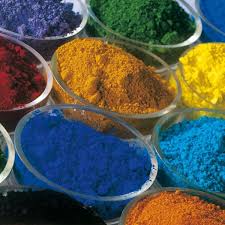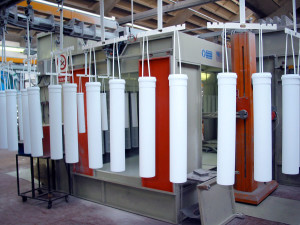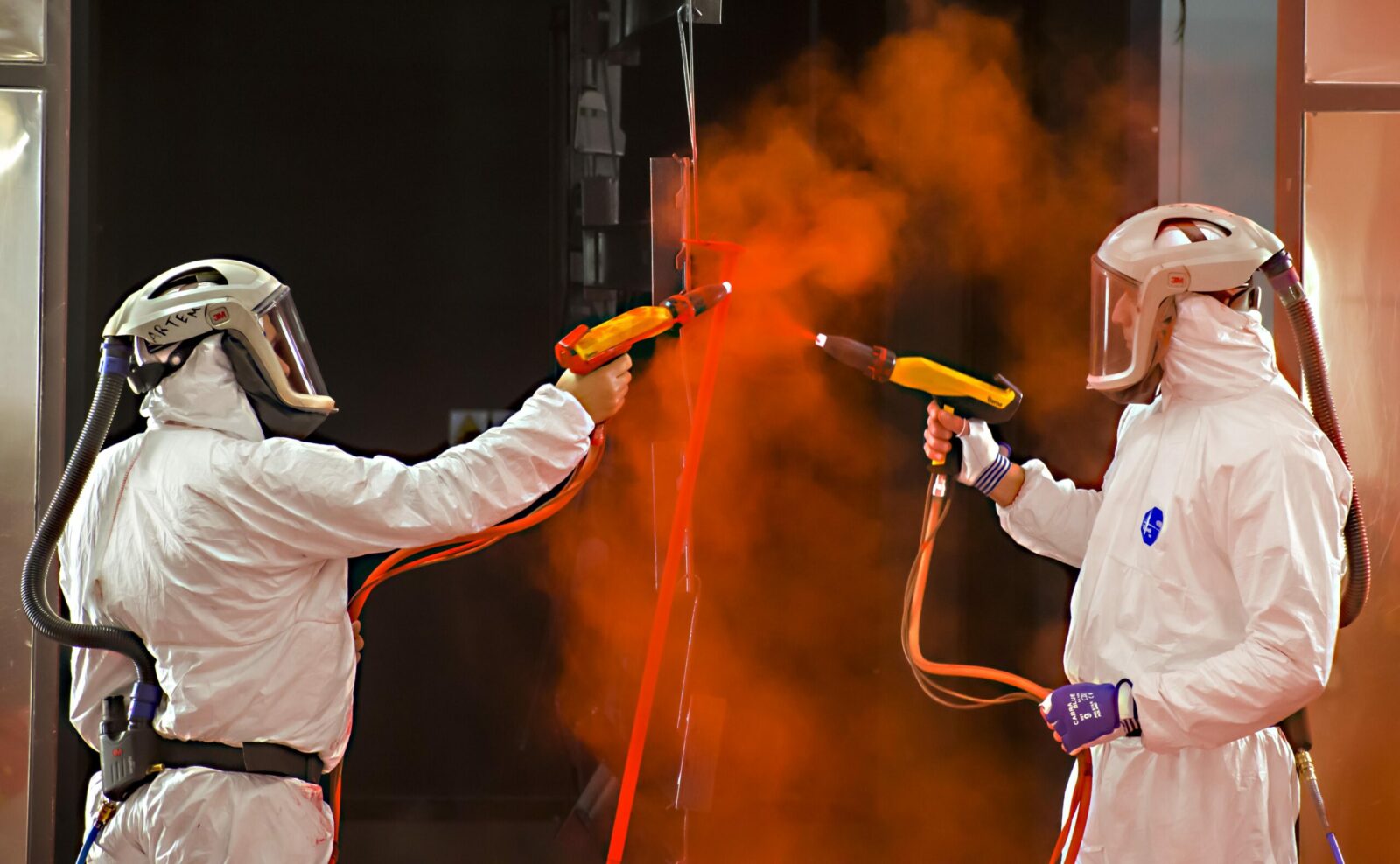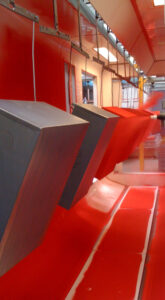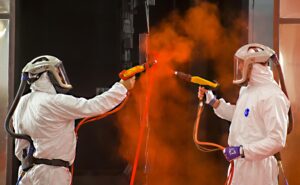To guarantee a quality product we have chosen powder coating with robotic chain spray lines, collaborating with a modern industry that, like us, invests in innovation, offering a real powder coating that stands out for its durability, quality and sustainability.
This type of coating is the ideal process for our fence structures, poles, railings and gates as it offers superior finishes in terms of aesthetics and durability and the entire range of colors of the RAL table with finishing options ranging from satin to brilliant, through textured, metallic, wrinkled and glittered, an unparalleled customization, suitable for every need.
How powder coating is done;
- Phase 1, hot alkaline degreasing: the items are exposed to a treatment that prepares the metal surfaces for the subsequent nanotechnological phase, the product used for degreasing does not contain phosphates and does not generate sludge to be disposed of, helping ecological processes.
- Phases 2 and 3, rinsing: the items are rinsed with semi-osmotic water nebulized with deep-tropical-rain technology (very dense high-pressure rain).
- Phase 4, deoxidation: a mixture of balanced inorganic acids is sprayed on the articles, which have the task of activating all the surfaces for the subsequent nanotechnological passivation conversion phase (for example, for aluminium and its alloys, this particular treatment is able to remove up to 1 gram/m2 of surface residues and almost all the die-casting release agents).
- Phase 5, pre-rinse: the items are rinsed again with semi-osmotic water nebulized with deep-tropical-rain technology.
- Phase 6, rinsing with pure atomized osmotized water: this specific “fine” washing precedes the nanotechnological passivation conversion, emphasizes the deoxidation process and helps maintain an electrical conductivity lower than 15µS (microsiemens) throughout the entire working process.
- Phase 7, nanotechnological passivation conversion: for this phase of preparation for the layer of powder that will be spread on the articles, the product DOLLCOAT SA 115 is used, which guarantees constant quality on all treated materials and is able to give the treated surface a substantial increase in the adhesion of the powders, while also increasing resistance to corrosion. This is a notable improvement compared to traditional conversion processes obtained using iron phosphates with zirconium/titanium or chromium salt passivations (notoriously very polluting for the environment).
- Phase 8, powder coating: the coating with thermoplastic powders takes place in a completely automated way, the items hooked and arranged on the chain are covered with powder by the action of electrostatic corona and tribo-electric guns, arranged on robot arms that follow the shape and size of all the items displayed in the processing tunnel, this standardized process allows for greater resistance to atmospheric, chemical and abrasive agents, compared to traditional painting with aerosol and manual brush/roller techniques.
- Phase 9, fusion drying and end of coating: after being covered with powder paint, the articles enter the oven where the presence of finely controlled high temperatures melts the powder on the material, transforming it into a homogeneous surface with the previously chosen finish, after which they move on to drying/cooling which ends the process.
The powder paints that do not remain attached to the exposed articles, precipitate inside the tunnel without spreading into the surrounding areas, they are then collected, mixed with all the other previously collected ones and used again as a base coat for double-pass painting, which gives an even greater duration than the traditional single coat.
